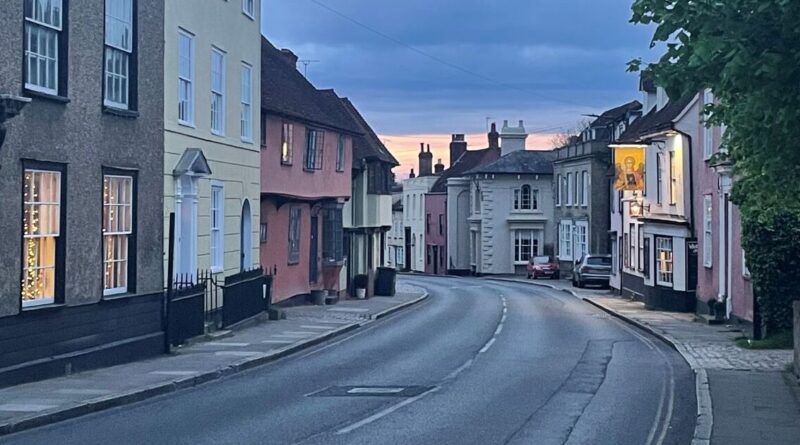I live beside one of UKs oldest streets that dates back to the Romans
Nestled away in a quiet surburban town in the North Essex, a historic street is a delightful relic from a bygone era, weaving tales of history and whispers from the past. Bradford Street, in Braintree, is not just one of the oldest streets in the UK but also a captivating journey through time.
This picturesque street has seen centuries of change, from early beginnings as a Roman road to its significance as a bustling hub for pilgrims and wool traders. A key road that once connected the Essex city of Chelmsford to Long Melford in Suffolk, it became an essential part of the pilgrim journey, linking London and Canterbury to Bury St. Edmunds, Walsingham and beyond. Nowadays, the leaning houses with their beautiful coloured facades are an insta-friendly reminder that historic properties can make delightful modern day homes.
I frequently wander past the charming timber-framed houses, utterly enchanted by the stories that could be told within their beams.
Most of the properties on Bradford Street are Grade II Listed and are protected by Historic England. As part of the Braintree Conservation Area, Bradford Street and the historic town centre has been recognised for its “special architectural or historic interest.”
In a bid to preserve its fascinating history, a volunteer group called the Friends of Bradford Street have also dedicated themselves to maintaining and sharing the street’s heritage.
There is even an informative board attached to the wall at one end, detailing the fascinating history behind each of the homes.
Among the historic gems is the Bradford Street Mill, which has been in operation since 1303, adding to the street’s rich industrial heritage.
An eyecatching timber and weatherboard building, its sits atop the River Blackwater and has links to King Henry VIII.
Another early Tudor house has an unusual musical history. When a famous jazz critic purchased the property in the 1950s, his great friend Duke Ellington, the famous jazz pianist and band leader, was known to have stayed here on occasion.
The Old Court, one of the largest on the road, dates back to the 17th century. The timber-framed building has undergone several transformations throughout its rich history.
In 1915, it was repurposed as a children’s home before becoming a hotel in the 1960s.
The Dragons House dates back to the first half of the 16th century. To the front of the property, a woman’s face is set in plaster, which some believe is supposed to be Anne Boleyn.
Other historical houses on the street include a two-story dwelling house that is believed to date back as far as the 14th century, a grand 17th-century home with water from the springs on the hill running through the cellar, and an Elizabethan terrace that was formerly The Woolpack Inn.
An iconic sight, the heavily beamed Tudor House leans in towards the street, bowed by time. Built in 1520, it was later used by the Civic Society to house the Braintree Museum Collection.
There is also The Angel Inn – a friendly local pub in a beautiful old building that is believed to date back to the late 1800s. As the only pub still standing on this historic street, it seamlessly blends ancient beams with a modern day welcome.
At the top of Bradford Street, a short stroll into Bocking End takes you past the glory of the Bocking and Braintree Gardens, a later Vitorian addition that surrounds the medieval splendour with open green space.
And just beyong that a Grade II listed theatre – The Institute – has been bringing entertainment to the town since it’s inception in 1862.
Buyers looking to live on Bradford Street can snap up a one bedroom flat for £180,000 or a much larger five bedroom home is currently being advertised with an asking price of £499,000.
According to Rightmove, some properties in Bradford Street have sold for excess of £900,000 – still a relatively small price to pay to be the guardian of so much history.




